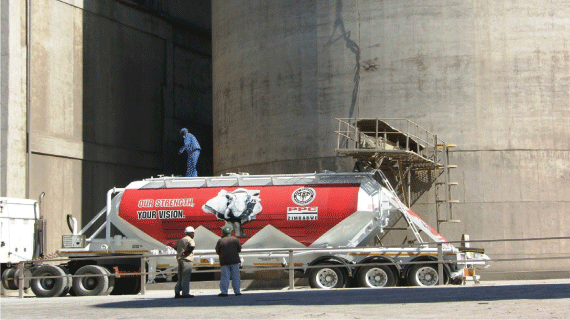
JOHANNESBURG — About a trillion dollars will be spent on investments using cement in South Africa, Zambia and Zimbabwe between this year and 2018, according to market research house Frost and Sullivan.
South Africa’s government aims to spend R4 trillion on infrastructure over the next 15 years.
Earlier this month, Pretoria Portland Cement (PPC) chief executive officer Ketso Gordhan acquired R3m worth of shares on the open market, saying it underlined his confidence in South Africa’s largest cement manufacturer.
“Higher government spending on public infrastructure such as the construction of new energy and power facilities as well as the expansion of transportation infrastructure will boost the need for cement in Southern Africa,” Frost&Sullivan research analyst Yeukayi Kadzere said on Wednesday.
South Africa’s domestic cement industry is dominated by the likes of PPC, Afrisam, NPC and French multinational Lafarge.
The import market includes mostly Pakistani and some Indian cement products.
Kadzere said cement production in Southern Africa stood at about 14,9 million tonnes last year and was expected to reach 18,1 million tonnes in 2018. New cement manufacturing plants in South Africa, Zambia and Zimbabwe would boost cement production capacity.
Sephaku, with funding from Nigeria-based Dangote Cement, will, when it begins production later this year, become the first South African entrant in the local cement market since 1934.
- Chamisa under fire over US$120K donation
- Mavhunga puts DeMbare into Chibuku quarterfinals
- Pension funds bet on Cabora Bassa oilfields
- Councils defy govt fire tender directive
Keep Reading
Sephaku has said it will start producing cement before December this year but has not yet announced a launch date.
Despite increases in costs, Kadzere still foresaw growth in cement production but said constructors might pay more for their cement.
“While on the one hand production is rising, the costs associated with production are also escalating as a result of soaring electricity and fuel prices.“Cement producers in the Southern African region, therefore, are struggling to keep costs to a minimum in order to maximise profit. Pricing pressures are further intensified by each participant’s attempt to remain competitive by keeping cement prices down.”
— BDLive










